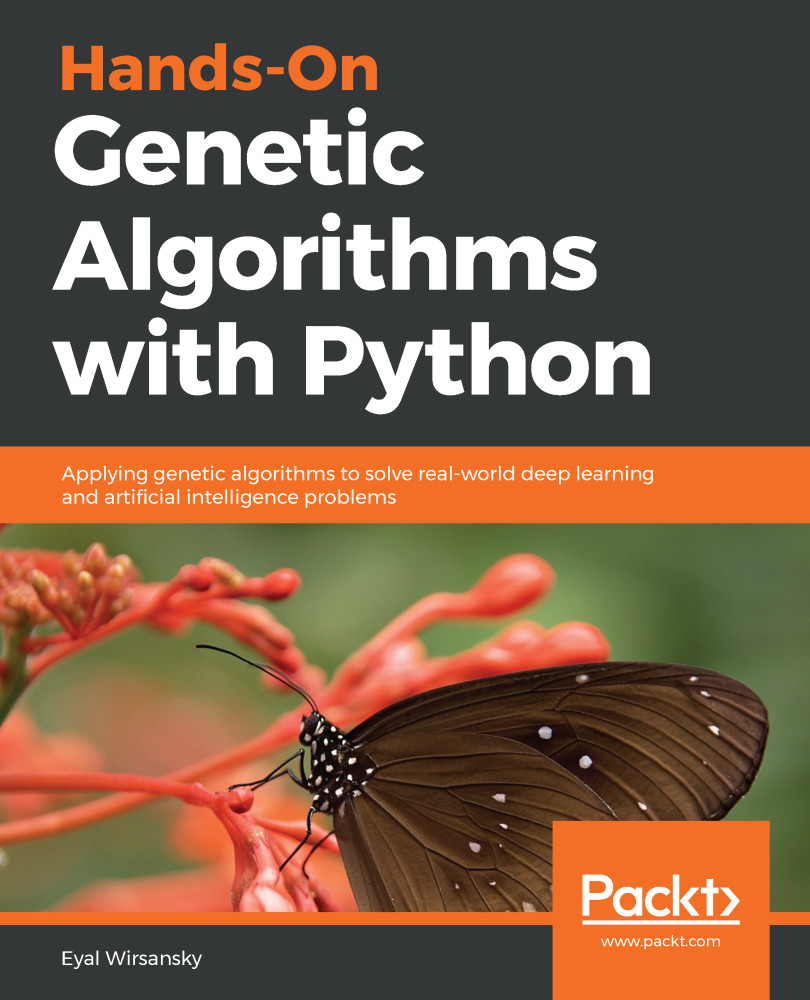In this chapter—as promised—the real fun begins! You will be introduced to DEAP—a powerful and flexible evolutionary computation framework capable of solving real-life problems using genetic algorithms. After a brief introduction, you will get acquainted with two of its main modules—the creator and the toolbox—and learn how to create the various components needed for the genetic algorithm flow. We will then write a Python program that solves the OneMax problem—the Hello World of genetic algorithms—using the DEAP framework. This will be followed by a more concise version of the same program—taking advantage of the built-in algorithms of the framework. And we saved the best for the last part of this chapter, where we will be experimenting with various settings of the genetic algorithm we created and...
-
Book Overview & Buying

-
Table Of Contents

Hands-On Genetic Algorithms with Python
By :

Hands-On Genetic Algorithms with Python
By:
Overview of this book
Genetic algorithms are a family of search, optimization, and learning algorithms inspired by the principles of natural evolution. By imitating the evolutionary process, genetic algorithms can overcome hurdles encountered in traditional search algorithms and provide high-quality solutions for a variety of problems. This book will help you get to grips with a powerful yet simple approach to applying genetic algorithms to a wide range of tasks using Python, covering the latest developments in artificial intelligence.
After introducing you to genetic algorithms and their principles of operation, you'll understand how they differ from traditional algorithms and what types of problems they can solve. You'll then discover how they can be applied to search and optimization problems, such as planning, scheduling, gaming, and analytics. As you advance, you'll also learn how to use genetic algorithms to improve your machine learning and deep learning models, solve reinforcement learning tasks, and perform image reconstruction. Finally, you'll cover several related technologies that can open up new possibilities for future applications.
By the end of this book, you'll have hands-on experience of applying genetic algorithms in artificial intelligence as well as in numerous other domains.
Table of Contents (18 chapters)
Preface
Section 1: The Basics of Genetic Algorithms
 Free Chapter
Free Chapter
An Introduction to Genetic Algorithms
Understanding the Key Components of Genetic Algorithms
Section 2: Solving Problems with Genetic Algorithms
Using the DEAP Framework
Combinatorial Optimization
Constraint Satisfaction
Optimizing Continuous Functions
Section 3: Artificial Intelligence Applications of Genetic Algorithms
Enhancing Machine Learning Models Using Feature Selection
Hyperparameter Tuning of Machine Learning Models
Architecture Optimization of Deep Learning Networks
Reinforcement Learning with Genetic Algorithms
Section 4: Related Technologies
Genetic Image Reconstruction
Other Evolutionary and Bio-Inspired Computation Techniques
Other Books You May Enjoy
